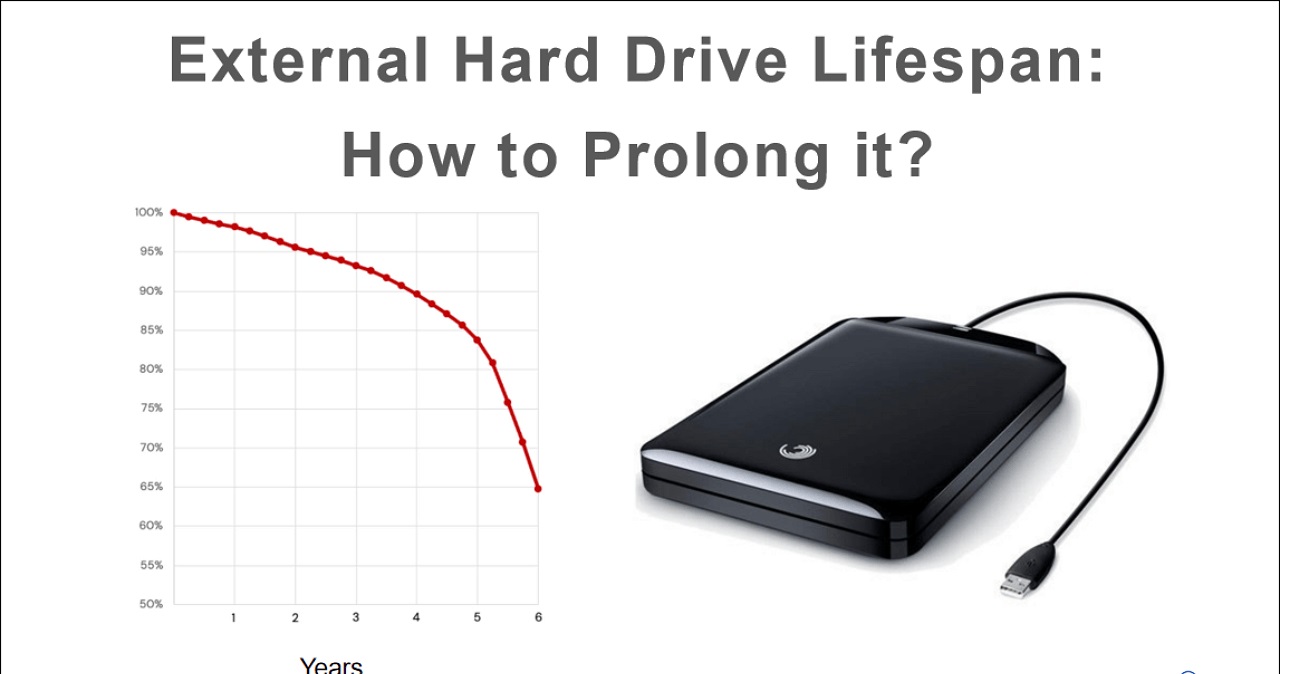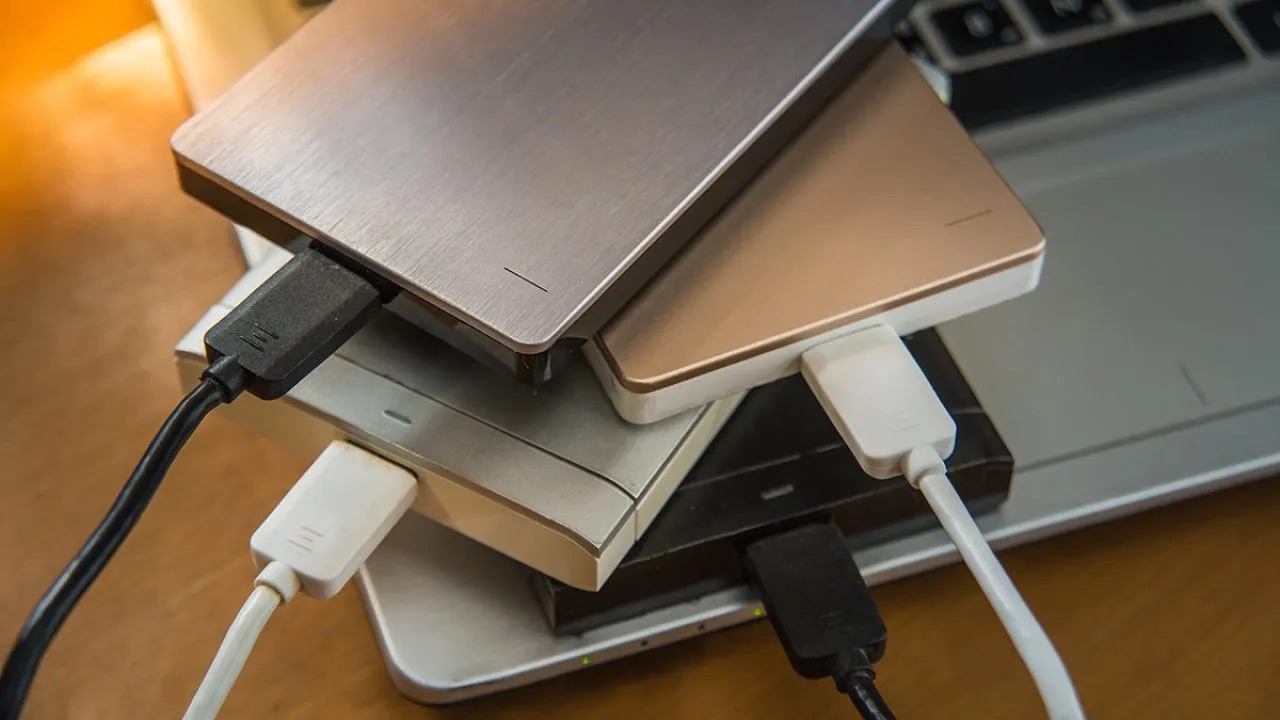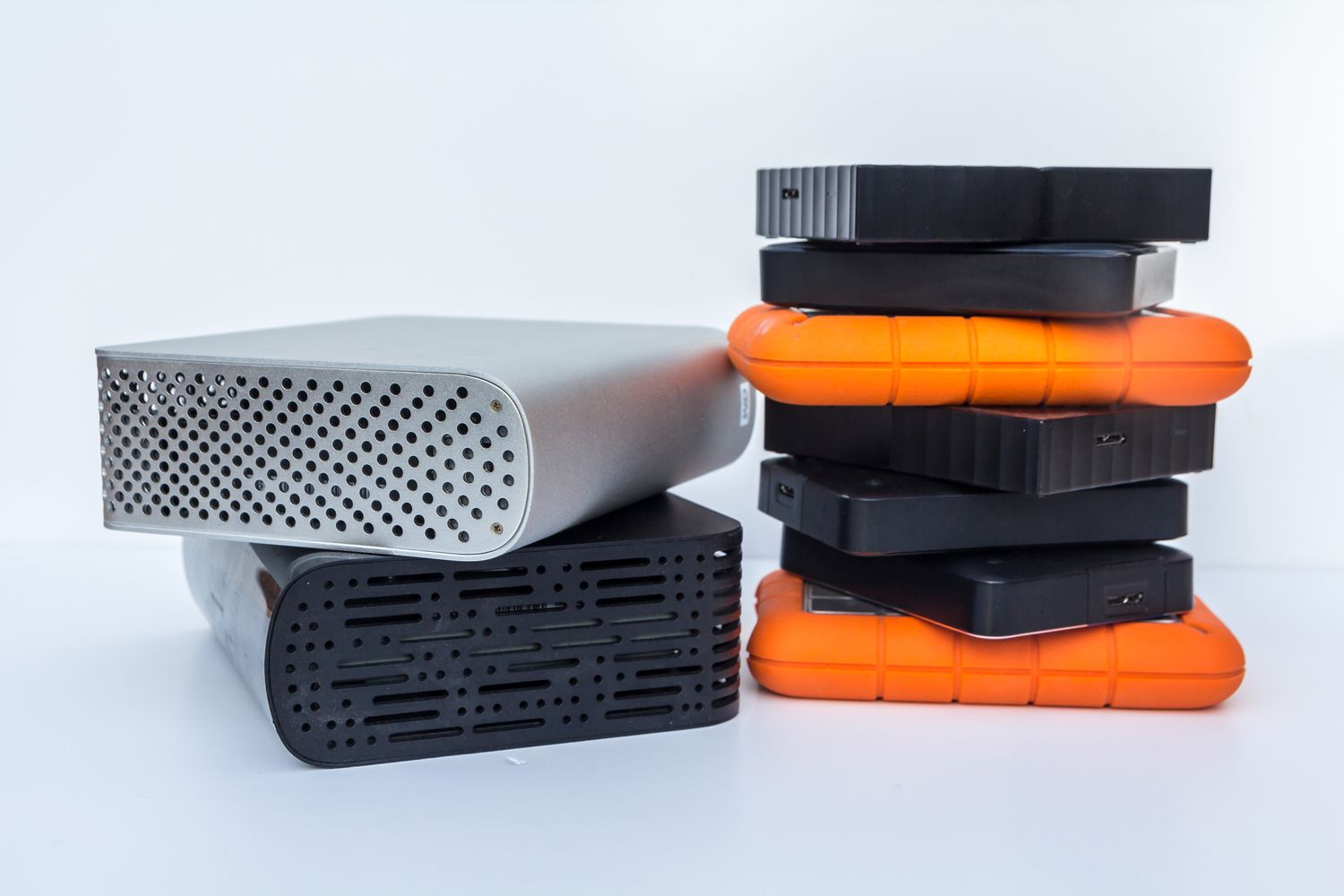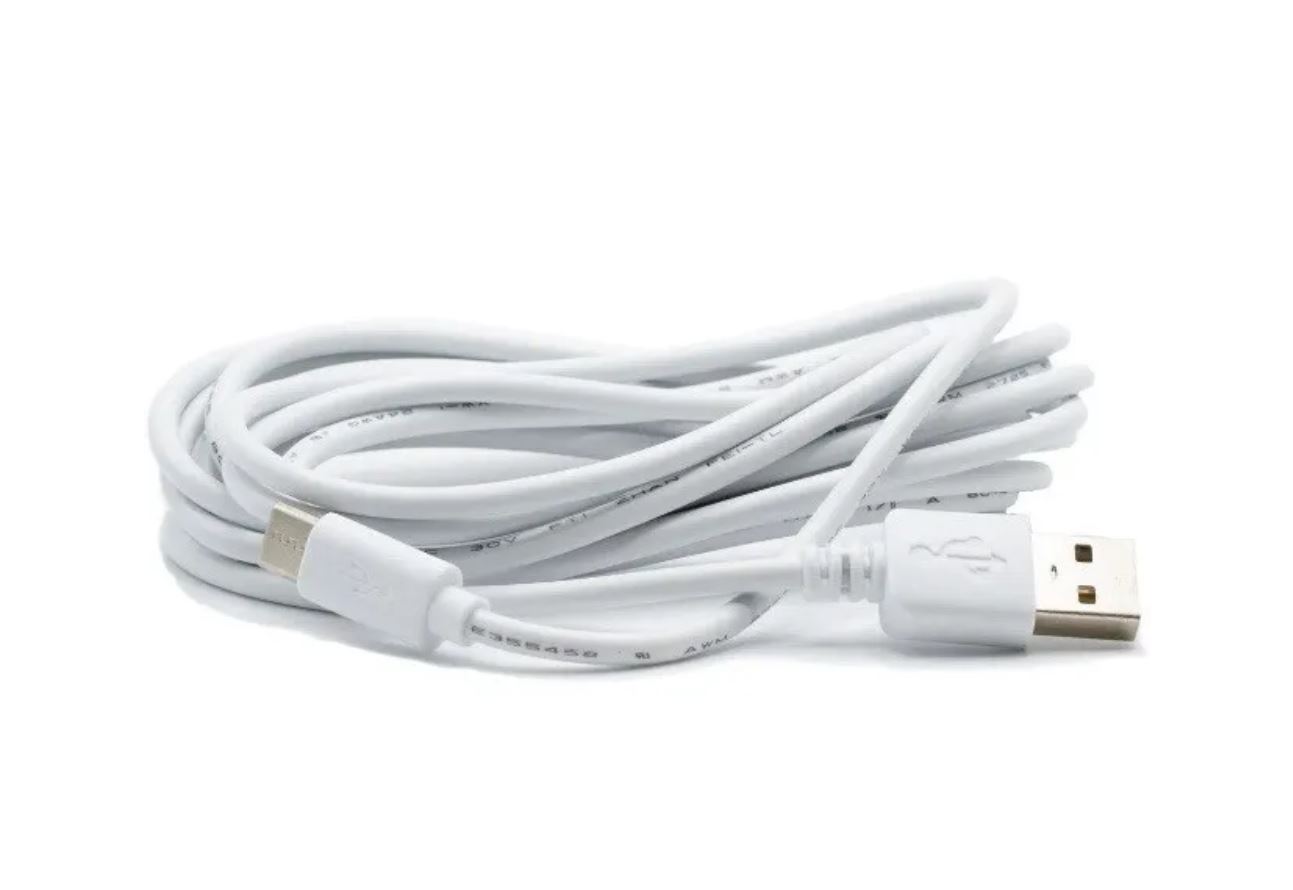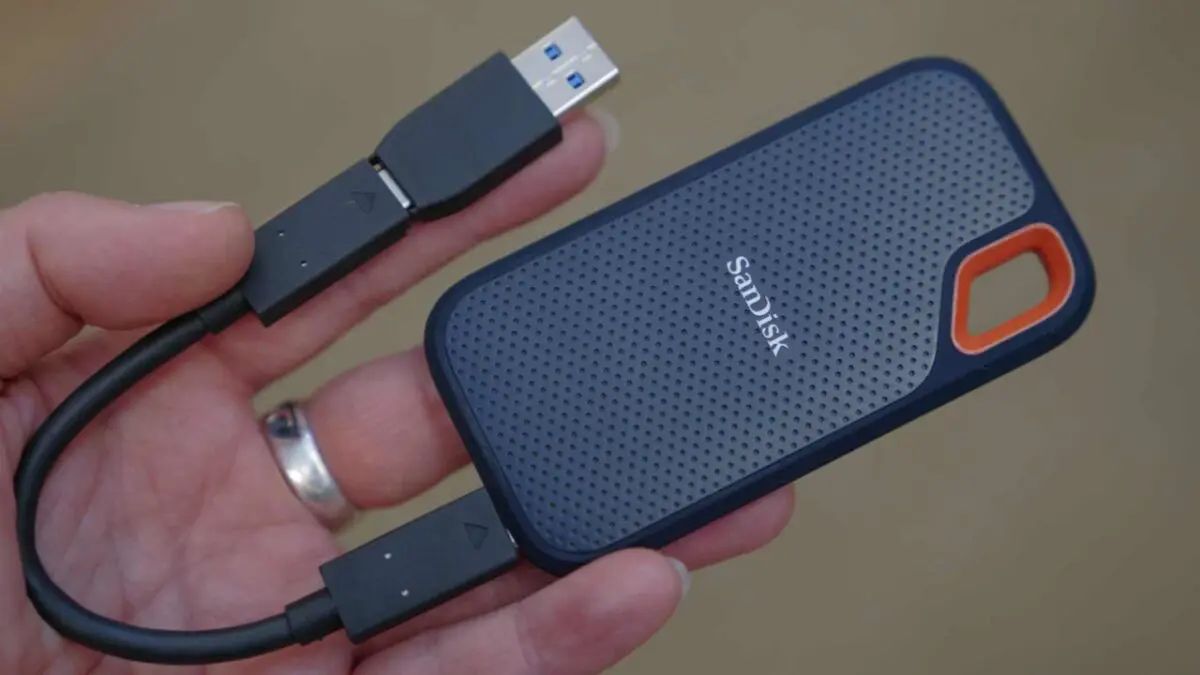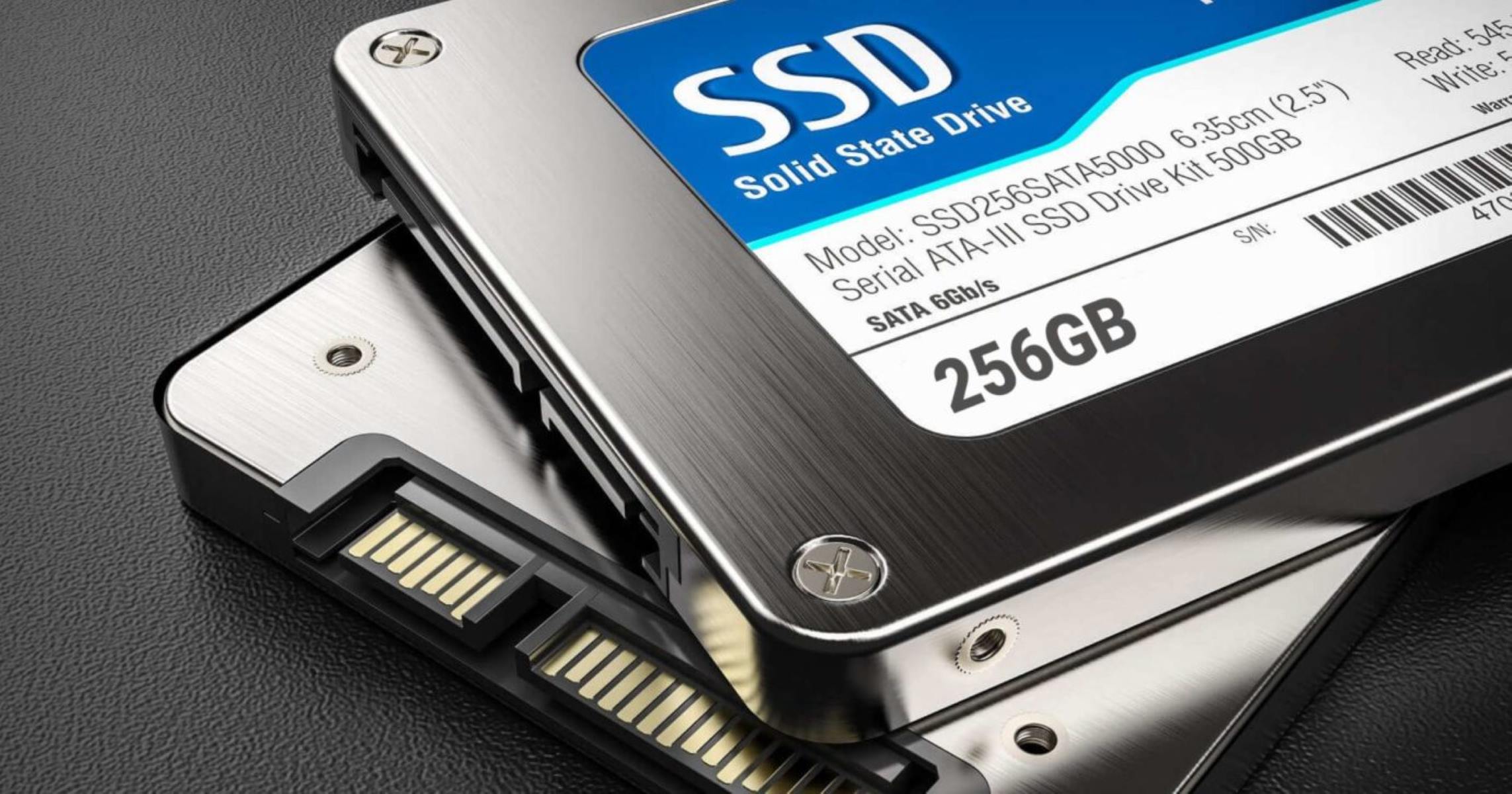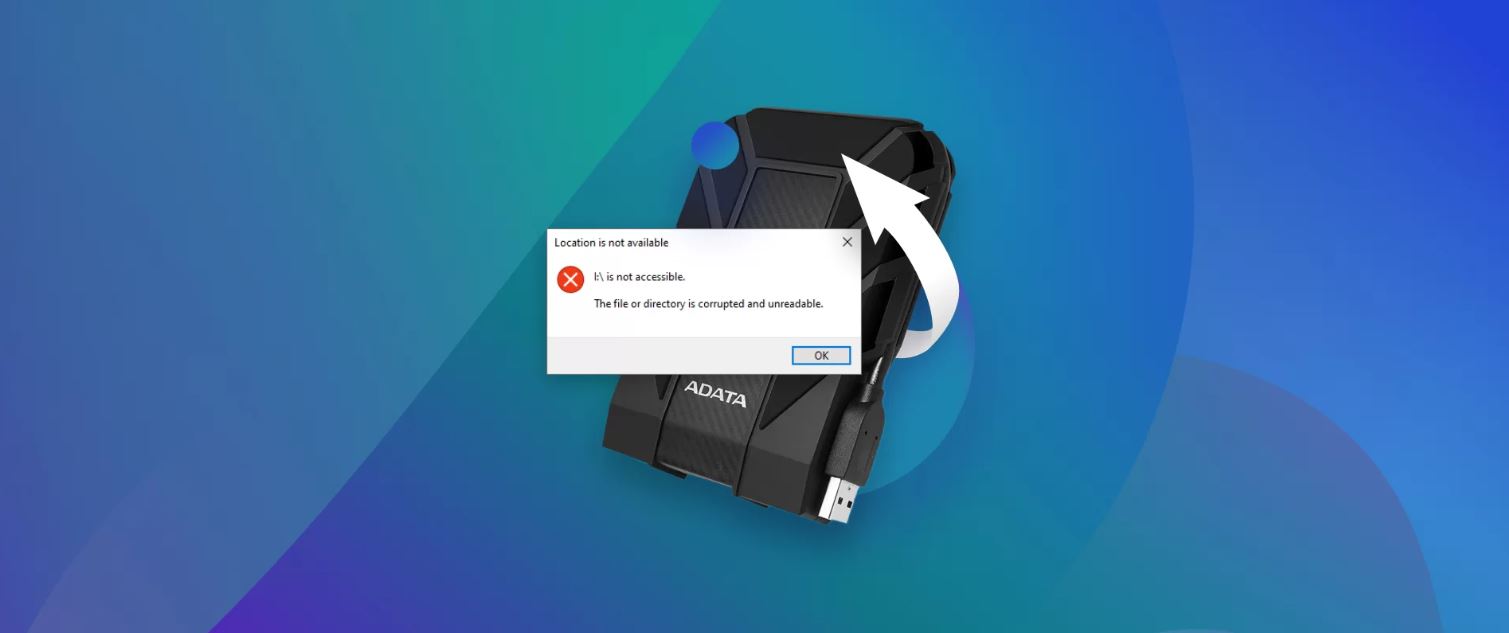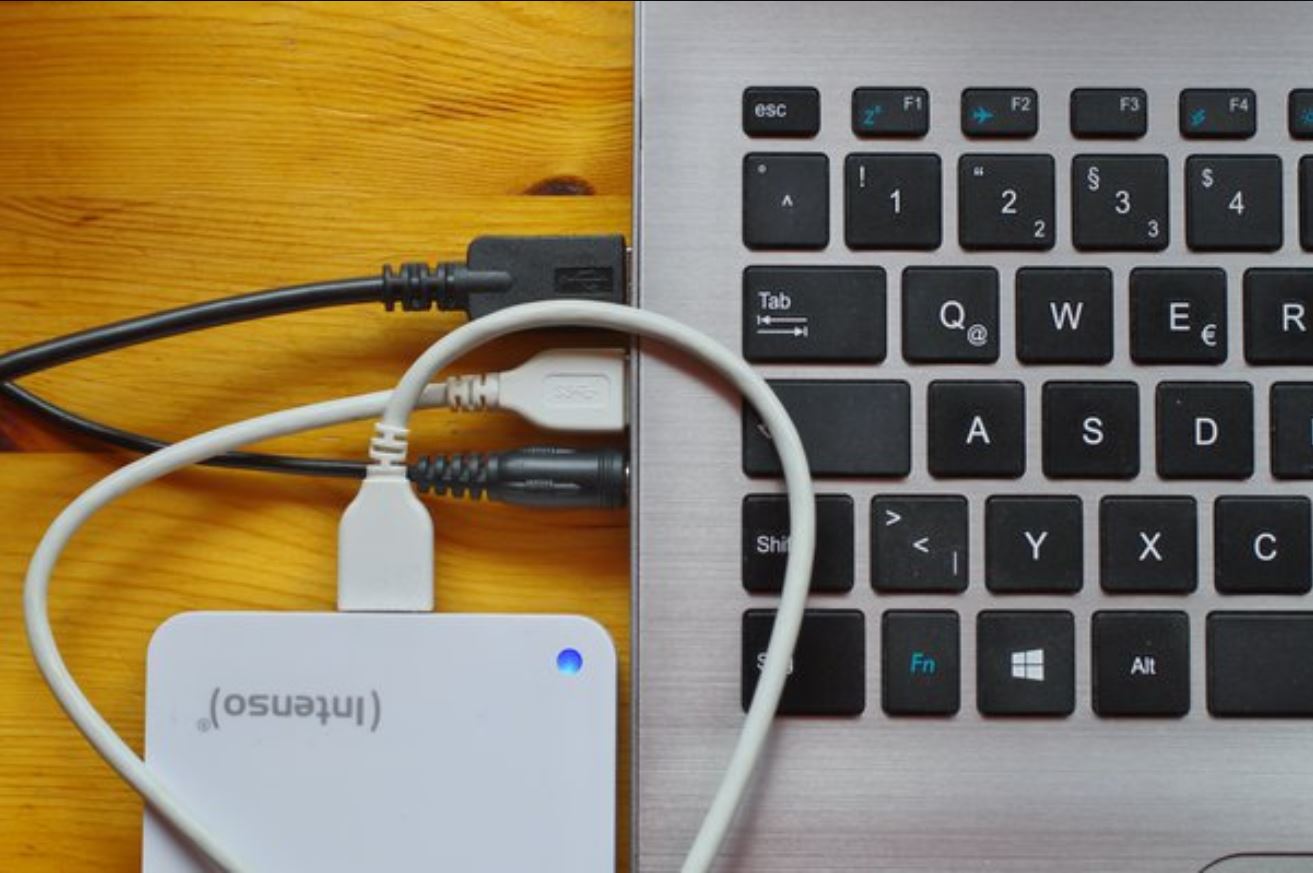Introduction
An external hard drive is a convenient and popular storage solution for computer users who need additional space for their files, documents, photos, videos, and more. These compact devices connect to your computer via a USB or Thunderbolt port, allowing you to easily backup or transfer large amounts of data.
When investing in an external hard drive, it’s important to consider its lifespan. How long can you expect your external hard drive to last? While there is no definitive answer, several factors can affect its longevity.
In this article, we will explore the various factors that can impact the lifespan of an external hard drive. We will discuss the different types of storage drives, the influence of usage and workload, the role of environmental conditions, the significance of proper handling and care, and the importance of manufacturer quality and reputation.
Additionally, we will identify the warning signs of a failing external hard drive and provide some practical tips on how to prolong its lifespan. By understanding these factors and taking appropriate measures, you can maximize the lifespan and reliability of your external hard drive.
Factors Affecting the Lifespan of an External Hard Drive
Several important factors influence the lifespan of an external hard drive. Understanding these factors can help you make informed decisions when purchasing and maintaining your storage device.
The first crucial factor to consider is the type of storage drive: HDD (hard disk drive) or SSD (solid-state drive). HDDs have mechanical parts that are susceptible to wear and tear over time, which can lead to failures. On the other hand, SSDs have no moving parts and are generally more durable and reliable.
Another key factor is the usage and workload. Constantly using your external hard drive and subjecting it to heavy workloads, such as continuous backups or running resource-intensive applications, can shorten its lifespan. It’s important to balance the frequency and intensity of usage to extend the longevity of your drive.
The environmental conditions in which your external hard drive operates also play a significant role. Extreme temperatures, high humidity, and exposure to dust or moisture can damage the internal components of the drive. It is advisable to store and use your external hard drive in a cool, dry, and clean environment to minimize potential damage.
Proper handling and care are crucial to ensure the longevity of your external hard drive. Avoid dropping or mishandling the device, as physical damage can cause malfunctions or data loss. Safely eject the drive from your computer before disconnecting it to prevent any potential data corruption.
Furthermore, the quality and reputation of the manufacturer are important factors to consider. Some brands have a track record of producing reliable and long-lasting external hard drives. Researching and choosing a reputable manufacturer can significantly increase the chances of your drive lasting for a longer period.
By understanding and considering these factors, you can make informed decisions when purchasing an external hard drive and take appropriate measures to prolong its lifespan. In the next sections, we will explore the specific signs of a failing external hard drive and provide practical tips to extend its lifespan.
Storage Type: HDD vs. SSD
When choosing an external hard drive, one of the most important considerations is the type of storage drive it utilizes. There are two main types: HDD (hard disk drive) and SSD (solid-state drive). Each type has its own benefits and limitations, which can impact the lifespan of the drive.
HDDs are the traditional form of storage and have been used for decades. They consist of spinning disks and magnetic heads that read and write data. While HDDs offer larger storage capacities at a lower cost per gigabyte, they are more susceptible to mechanical failures due to their moving parts. The spinning disks can wear out over time, and the magnetic heads can become misaligned or damaged, leading to data loss or drive failure.
On the other hand, SSDs are a newer technology that has gained popularity in recent years. Instead of using moving parts, SSDs rely on flash memory chips to store data. As a result, they are much faster and more durable than HDDs. SSDs are not affected by physical shock or vibrations, making them ideal for laptops or portable external drives. They also consume less power and generate less heat.
Because SSDs have no moving parts, they tend to have a longer lifespan compared to HDDs. However, it’s important to note that SSDs have a limited number of write cycles. Each time data is written to an SSD, the lifespan of the individual memory cells can diminish. Nevertheless, modern SSDs have advanced wear-leveling algorithms that distribute data evenly across the drive, mitigating this issue.
In summary, SSDs generally have a longer lifespan and are more durable than HDDs due to their lack of mechanical components. However, they are typically more expensive and offer smaller storage capacities. Ultimately, the choice between an HDD and an SSD depends on your specific needs and budget.
Drive Usage and Workload
The usage and workload of an external hard drive have a significant impact on its lifespan. How frequently and intensively you use the drive can determine how long it will last.
Constantly accessing and utilizing the external hard drive can put a strain on its components, particularly the read/write heads in HDDs. If you frequently transfer large files, continuously run resource-intensive applications, or perform frequent backups, it can increase the wear and tear on the drive. This can lead to a decrease in its lifespan.
It’s important to strike a balance between the frequency and intensity of usage. Avoid unnecessary read/write operations and excessive heat buildup by not running applications or processes on the external drive unless necessary. Also, make sure to safely eject the drive when it is not in use and avoid abruptly disconnecting it from the computer.
Additionally, the workload can impact the lifespan of an external hard drive. If you frequently handle large and demanding files, such as video editing projects or data analysis, it can put a higher workload on the drive. The constant read/write operations and extensive data manipulation can lead to faster wear and tear.
To prolong the lifespan of your external hard drive, consider spreading the workload across multiple drives. By distributing the load, you reduce the burden on a single drive, which can help to prevent premature failure.
Regular maintenance and monitoring can also contribute to the longevity of your external hard drive. Keep an eye on drive health by using monitoring software that can detect any early signs of issues. This allows you to take appropriate action, such as backing up data and replacing the drive if necessary.
In summary, the frequency and intensity of usage, as well as the workload, can significantly impact the lifespan of an external hard drive. Balancing the usage, minimizing unnecessary operations, and distributing the workload across multiple drives can help to prolong its lifespan and ensure reliable performance.
Environmental Conditions
The environmental conditions in which an external hard drive operates play a crucial role in its longevity. Exposure to extreme temperatures, high humidity, dust, and moisture can have detrimental effects on the drive’s internal components.
Extreme temperatures can cause the drive’s components to expand or contract, potentially leading to damage. It is recommended to store and use your external hard drive in a cool and controlled environment, away from direct sunlight or extreme heat sources. Similarly, extremely cold temperatures can affect the performance and reliability of the drive.
High humidity levels can lead to moisture buildup and condensation within the drive, causing corrosion and damaging the internal circuitry. It is advisable to keep the drive in a dry environment and avoid exposing it to excessive humidity.
Dust and debris can accumulate on the drive’s surface and affect its performance, particularly in HDDs, where the dust can interfere with the movement of the read/write heads. Regularly clean the external hard drive using a soft, lint-free cloth and avoid operating it in dusty environments.
Moisture is one of the biggest enemies of electronic devices. Exposure to water or other liquids can cause short-circuits and irreversible damage to the drive’s components. Keep your external hard drive away from liquids and ensure it is stored in a safe and dry location.
If you are using the external hard drive in a portable capacity, such as during travel or on-the-go, take extra precautions to protect it from environmental hazards. Use protective cases or sleeves to shield the drive from potential impacts, moisture, and dust.
By taking measures to maintain appropriate environmental conditions for your external hard drive, you can significantly extend its lifespan and reduce the risk of hardware failures or data loss.
Proper Handling and Care
Proper handling and care are essential in maintaining the longevity and performance of an external hard drive. By following a few simple practices, you can minimize the risk of physical damage and extend the lifespan of your valuable data storage device.
Avoid mishandling the external hard drive, especially when it is powered on and in use. Dropping or subjecting the drive to sudden impacts can cause internal damage to its delicate components. Treat the drive with care and store it securely when not in use.
When disconnecting the external hard drive from the computer, ensure that it is safely ejected. This allows the drive to properly terminate any ongoing operations and prevents potential data corruption. In some cases, abrupt removal of the drive can lead to file system errors or drive failures.
Avoid bending or stressing the USB or Thunderbolt cables that connect the external hard drive to your computer. These cables are vital for data transfer and power supply. If the cables become damaged or frayed, it can result in a loss of connectivity or power, potentially damaging the drive or causing data loss.
Keep the external hard drive clean to prevent the buildup of dust and debris. Use a soft, lint-free cloth to gently wipe the drive’s exterior surface. Avoid using harsh chemicals or abrasive cleaning agents that may damage the drive’s finish or the label containing important information.
In case the drive requires transportation, use a protective case or sleeve to safeguard it from potential impacts and scratches. This is especially important for portable external hard drives that are frequently carried around. It provides an additional layer of protection against physical damage and ensures the drive remains in good condition.
Regularly backup your data to secure it in case of potential drive failures. Creating redundant copies of your important files on other storage devices or in the cloud can provide an extra layer of protection and ensure that your data remains safe even if the external hard drive malfunctions.
By handling your external hard drive with care and implementing these simple practices, you can significantly prolong its lifespan and safeguard your valuable data from potential damage or loss.
Manufacturer Quality and Reputation
The quality and reputation of the manufacturer are important factors to consider when purchasing an external hard drive. Opting for a reputable manufacturer can greatly impact the lifespan and reliability of your device.
Well-established manufacturers with a proven track record of producing high-quality storage devices tend to prioritize the use of reliable components and stringent manufacturing processes. They invest in research and development to enhance the durability and performance of their products.
Reputable manufacturers often conduct rigorous testing to ensure that their external hard drives meet industry standards for reliability and longevity. These tests can simulate real-world usage scenarios, including high workloads and varying environmental conditions. By subjecting their drives to these tests, manufacturers can identify and rectify potential issues before the product reaches the market.
Favoring a manufacturer with a good reputation can also provide peace of mind. Through customer reviews and feedback, you can gauge the experiences of other users and gain insights into the reliability and lifespan of their external hard drives. Look for manufacturer warranties that provide an added layer of protection, indicating the company’s confidence in their product’s quality.
Additionally, reputable manufacturers often offer reliable customer support and assistance. In the event of any technical issues or concerns, prompt and helpful support can greatly assist in resolving problems and ensuring the longevity of your external hard drive.
While reputable manufacturers may come with a higher price tag, it is generally worth the investment. The extra cost can be seen as an assurance of better quality, durability, and reliability. It is important to prioritize the long-term lifespan and performance of your external hard drive over short-term cost savings.
Ultimately, choosing a reputable and trustworthy manufacturer can provide you with a higher chance of owning an external hard drive that will withstand the test of time and meet your storage needs for years to come.
Signs of a Failing External Hard Drive
Recognizing the signs of a failing external hard drive is crucial in order to take timely action to protect your data. Here are some common signs that indicate potential issues with your external hard drive:
1. Slow Performance: If your external hard drive takes longer than usual to access files or perform tasks, it may be a sign of drive deterioration or impending failure.
2. Unusual Noises: Grinding, clicking or buzzing sounds coming from the drive can indicate mechanical issues such as a failing motor, read/write head, or damaged platters. These sounds should not be ignored.
3. Frequent Disconnection: If your external hard drive frequently disconnects or is not recognized by your computer, it may be a sign of a faulty cable or interface, or even a failing drive.
4. Data Corruption: Unexpected data errors or corrupted files on your external hard drive can indicate potential issues with the drive’s read/write mechanism or other hardware components.
5. S.M.A.R.T. Warnings: Self-Monitoring, Analysis, and Reporting Technology (S.M.A.R.T.) is a built-in feature in most modern hard drives that monitors various drive parameters. If you receive S.M.A.R.T. warnings indicating imminent drive failure, it’s essential to back up your data and replace the drive.
6. Overheating: Excessive heat generated by the external hard drive, such as consistent heating of the device’s casing, can be a sign of an internal issue, such as a faulty cooling system or damaged components. Continuous overheating can lead to drive failures.
7. Frequent Drive Errors: If you frequently encounter drive-related errors, such as CRC (Cyclic Redundancy Check) errors, sectors being marked as bad, or file system errors, it may indicate an underlying issue with your external hard drive.
If you notice any of these signs, it is crucial to take immediate action. Back up your data as soon as possible, as drive failures can lead to permanent data loss. Contact technical support or a professional data recovery service to assess the situation and determine the best course of action.
Remember, regular backups are essential for safeguarding your data, as even a healthy external hard drive can fail unexpectedly. Prevention and proactive action are key to minimizing the impact of failing or failed external hard drives.
How to Prolong the Lifespan of an External Hard Drive
Prolonging the lifespan of an external hard drive is possible by following some simple practices and maintenance routines. Here are a few tips to help you maximize the longevity of your valuable data storage device:
1. Safely Eject: Always safely eject your external hard drive from your computer before disconnecting it. This ensures that all read/write operations are completed and helps prevent data corruption or potential drive damage.
2. Proper Handling: Handle your external hard drive with care, avoiding dropping or mishandling it. Physical impact can lead to damage to the internal components, causing drive failure.
3. Store in a Safe Place: When not in use, store your external hard drive in a cool, dry, and dust-free environment. Consider using protective cases or sleeves to protect it from potential physical damage.
4. Avoid Extreme Temperatures: Exposure to extreme temperatures can negatively affect your drive’s components. Keep your external hard drive away from direct sunlight, heat sources, or extreme cold.
5. Maintain a Healthy Workload: Avoid constantly subjecting your drive to heavy workloads or prolonged usage. Balance your usage patterns and give your external hard drive regular breaks to prevent excessive wear and tear.
6. Regular Backups: Back up your important data regularly on separate storage devices or in the cloud. This ensures that even if your external hard drive fails, your data remains safe and accessible.
7. Monitor Drive Health: Keep an eye on your external hard drive’s health by periodically checking its SMART status using software tools. This can provide warnings of potential failures and allow you to take preemptive action.
8. Keep Firmware Updated: Check for and install any available firmware updates for your external hard drive. These updates often include enhancements and fixes that can improve performance and reliability.
9. Clean the Drive: Regularly clean your external hard drive using a soft, lint-free cloth to remove dust and debris. Be gentle and avoid using harsh chemicals or abrasive cleaning agents that can damage the drive’s surface.
10. Handle Cables Properly: Treat the USB or Thunderbolt cables that connect your external hard drive with care. Avoid bending or yanking the cables, as this can cause connectivity issues or damage the drive’s interface.
By following these practices, you can prolong the lifespan of your external hard drive and ensure the safety and accessibility of your valuable data. Prevention and proactive care are essential for maintaining the reliability and performance of your storage device.
Conclusion
The lifespan of an external hard drive can vary depending on several factors, including the storage type, usage patterns, environmental conditions, handling, and the reputation of the manufacturer. While there is no definitive answer to how long an external hard drive will last, taking proactive measures can significantly prolong its longevity.
Choosing the right storage type, such as opting for an SSD over an HDD, can provide increased durability and longevity due to the absence of moving parts. Proper usage and workload management, including avoiding excessive read/write operations and balancing workload across multiple drives, can reduce wear and tear.
Ensuring a suitable environment for the external hard drive, such as maintaining moderate temperatures and avoiding extreme elements like moisture and dust, can also contribute to its lifespan. Handling the drive with care, safely ejecting it, and maintaining regular backups are essential practices.
Furthermore, selecting a reliable and reputable manufacturer can provide a higher chance of obtaining a long-lasting and quality external hard drive. Reputable manufacturers often prioritize rigorous testing, use reliable components, and offer good customer support.
Being aware of the signs of a failing external hard drive, such as slow performance, unusual noises, frequent disconnections, and data corruption, is crucial. Taking immediate action and seeking professional assistance can help minimize data loss and prevent further damage.
By following these guidelines and investing in proper care and maintenance, you can maximize the lifespan of your external hard drive and ensure the continued safety of your valuable data. Remember, prevention and proactive measures are key to extending the longevity and reliability of your external hard drive.







